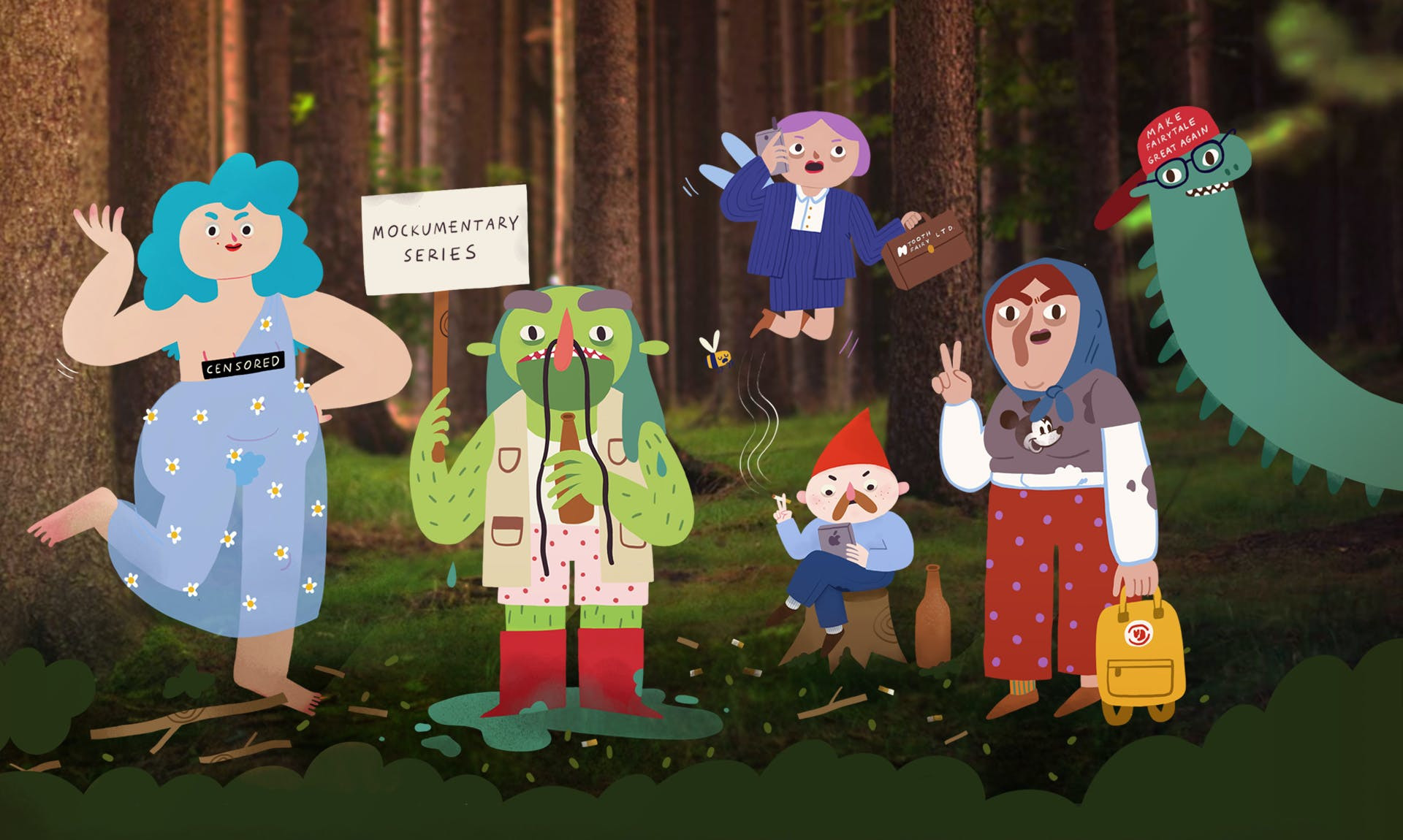

Cartoon Forum 2023: A Final Batch Of Pitch Reviews For New European Series
After four days and 82 pitches, Cartoon Forum 2023 wrapped up last week, and we’ve got one more group of pitches to share that caught our eye at this year’s event.
A wealth of creators, writers, and artists had the chance to present their ideas to crowds of broadcasters, producers, and distributors in the hopes of getting their tv shows made.
In addition to the shows below, we’ve highlighted 10 other pitches from the event, which can be found here and here.
A Horse Named Steve
Country: Ireland & Canada
Studio: Sixteen South & Nelvana
Audience: Preschool
Episodes: 52 x 11 min
Capturing the spirit of a show through a pitch isn’t easy, but the team behind A Horse Named Steve was able to express the show’s freewheeling energy while essentially doing admin. In a pitch that saw one staff member facetiously quit and another don a full-body horse costume, we were treated to a glimpse of a show with bright 2d visuals and an expressive cast of characters.
Steve’s journey takes place in a forest as he tries to assimilate and climb its social ladder. Extroverted and melodramatic, Steve meets various animals who either look to encourage him or mess with him a little. A Horse Named Steve feels energetic and streamlined in achieving the heart and comedy it aims for.

Kiki & Ailen
Country: France
Studio: Folivari
Audience: Ages 6-9
Episodes: 52 x 13 min
“Hijinks ensue” would be an appropriate motto for Kiki & Ailen. The titular characters are well-meaning tourists from another planet, curious about the ways of Earth. The duo encounters everyday objects like umbrellas, which they think cause rain, or animals like cows, which they know contain milk but are unsure how to get it out. The show’s slapstick sensibility blends well with its 2d style, with some visuals taking clear inspiration from the comedy of Hana-Barbera cartoons.
The large-scale mischief isn’t all the show has to offer. A big theme of Kiki & Ailen is acceptance. The main characters learn to accept the human way of life, and humans learn to accept their visitors from another world. The aliens encounter various people with various attitudes towards them, working towards an understanding of what it means to be human.

What’s Up Eesha?
Country: France
Studio: TeamTO
Audience: Preschool
Episodes: 52 x 11 min
It’s rare to see a show aimed at young children with the dry, almost sarcastic sense of humor of What’s Up Eesha? In the show, Eesha is a penguin who simply wants to be left alone. However, her group of Arctic friends are a bit obsessed with her, gravitating towards whatever interesting activity she tries to carry out in peace. Comedy arises from the creative ways in which Eesha seeks avoidance. In one instance, she needs peace and quiet while composing a song, but a crowd grows around her. Her only solution is catching a hot air balloon and finishing the song on a cloud, an elegantly silly exit strategy.
The simplicity of What’s Up Eesha?’s art style allows focus on characters and their expressiveness, which is a huge part of what makes the show work. That doesn’t mean it’s not a looker; there’s something warm and adorable about the character models here, almost emulating stop motion in how squishy and tactile they feel. Everything about What’s Up Eesha? is engineered to be endearing.

Pixie Pollux
Country: Belgium
Studio: Haptic
Audience: Young Adults
Episodes: 26 x 5 min
Pixie Pollux sees an intergalactic food truck owner traverse the vast cosmos, searching for enough money to retire. This combination of the vast beauty of space and the cynicism of capitalism is a microcosm of the contrasting energies the show plays with. The 2d art style is lovely, evoking a familiarity with other adult animated sitcoms while building character models that fall far outside that box. For example, the titular Pixie embarks on her journey with SPAC, a pet with the head of a cat attached to human legs wearing high heels. So much of the show is off-kilter, including its depiction of space.
The show’s setting allows the creators to get extremely weird by mixing scientific concepts with original inventions. For example, Pixie plans to use her vast wealth to retire in a White Hole. The opposite of the light-munching black hole, it essentially acts as space heaven. The fact that one must acquire enough wealth to live there is an interesting and creative method of social commentary.

Happily Never After
Country: Czech Republic & Germany
Studio: Heliumfilm & Reynard Films
Audience: Young Adults
Episodes: 10 x 20 min
The mockumentary format marries with animation in the experimental Happily Never After. The series follows a documentarian as he chronicles the lives of fairytale creatures in the modern day. These beings have been cast to the margins of society due to their outdated ideals, and the show aims to look at how we treat those who don’t suit societal norms.
The show’s 2d models are imposed on top of live-action backgrounds, allowing for the emulation of handheld camera movements, which mockumentaries often use to great comedic effect. Much of the show’s comedy also comes from the absurdity of the central characters. One episode follows Baba Yaga, the child-eating witch from mythology. After consuming a TikToker who was live-streaming her vile act, she lands herself in hot water and must testify in court. Each episode follows a different fictional character adapting to modern life. Whether it’s a dwarf looking to break into Hollywood or an anxiety demon getting anxiety itself, Happily Never After simultaneously achieves absurdity and social commentary.



